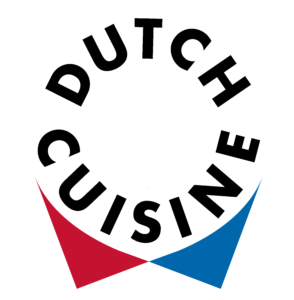Het Cultuur Programma van Dutch Cuisine is gericht op het benoemen en herontdekken van onze Nederlandse keuken en eetcultuur; ons culinaire geheugen.
Onze eetcultuur is ons erfgoed. Het beslaat een enorm rijke geschiedenis. Door de eeuwen heen is de Nederlandse keuken altijd een zeer adaptieve keuken geweest: een unieke keuken met de ‘esthetiek van de soberheid’. Dutch Cuisine brengt deze rijke culinaire geschiedenis breed onder de aandacht van chef-koks, restaurants en consumenten.
Dutch Cuisine Culinaire Routes
Op bijzondere routes door Nederland, worden Dutch Cuisine restaurants, producenten,l andschappen en cultuurmakers gepromoot aan binnen- en buitenlandse toeristen. Het is een totale ‘Memorabele eetcultuurbeleving’ die verder gaat dan uitsluitend ‘eten’ en onze rijke voedselgeschiedenis in beeld brengt. Chefs, musea, producenten, steden en regio’s met unieke (voedsel) landschappen laten elk seizoen iets anders zien in het landschap en op het bord. To see, to do, to taste.
In samenwerking met het Nederlands Bureau voor Toerisme zijn de eerste contouren voor de toeristische Dutch Cuisine Routes neergezet voor zowel het oosten als het westen van het land. Alle informatie over producten en producenten die wordt verzameld tijdens het samenstellen van de routes, kan worden gebruikt voor de Green Deal projecten tussen zakelijke afnemers (foodboxen) en consumenten, waardoor de afstand tussen consument en (lokale) producent wordt verkort: stimulering van de zogenaamde korte keten.
Door mensen in een ‘Memorabele eetcultuurbeleving’ te plaatsen wordt kortom niet alleen het verhaal verteld, maar komen mensen er ook mee in contact, wordt de korte keten bevorderd en gaan mensen door het diverse Hollandse landschap. Hier wordt een verbinding gemaakt tussen onze eetcultuur en natuur. functionaliteiten en daarnaast ook niet de gewenste hoeveelheid informatie kan plaatsen. Kortom, de huidige website voldoet niet aan de huidige vraag.
Matchmaking facility: Dutch Cuisine Regionale Matchmaking
De Nederlandse culinaire identiteit wordt medebepaald door een grote diversiteit aan bijzondere producten. Om chefs te inspireren en te faciliteren in het gebruik daarvan, vindt Dutch Cuisine het belangrijk dat deze producten goed voorhandig zijn voor de horeca.
In het Green Deal project Matchmaking Facility wordt toegewerkt naar een landelijk netwerk van producenten van dergelijke producten. Deze matchmaking werkt twee kanten op. Enerzijds worden mooie producten met een bijzonder verhaal toegankelijk(er) gemaakt voor de horeca. Anderzijds wordt een economische impuls geboden aan lokale producenten door bestaande initiatieven (Erkend streekkeurmerk, Lekkers dichtbij) meer onder de aandacht te brengen, en onderdeel te maken van een groter geheel. Een koppeling met de Dutch Cuisine Culinaire Routes is voor de hand liggend en wederzijds versterkend. Ook zullen deze producten onderdeel gaan uitmaken van de Dutch Cuisine Awards. Een landelijke wedstrijd waarin chefs worden uitgedaagd om met streekproducten te strijden om het beste Dutch Cuisine gerecht.
Dutch Cuisine ‘Earth to Table’ events
De ‘Earth to Table’ diners en tentoonstelling die tijdens de Dutch Design Week in 2016 werden gelanceerd, ontvingen de award Best of DDWE2016. ‘Earth to Table’ is een ode aan onze Nederlandse grond en cultuur. Tijdens de ‘Earth to Table’ diners laten Dutch Cuisine chefs de regionale smaak van producten uit Hollandse bodem proeven en Dutch designers laten zien dat diezelfde grond prachtige kleiserviezen en glaswerk voortbrengt. Zo komt de Nederlandse ‘terroir’ en wat deze voortbrengt weer samen op tafel.
